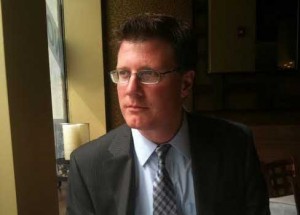CRITIC’S CORNER: The truth (about jury instruction 140) is out there
By: Michael D. Cicchini//July 1, 2016//
CRITIC’S CORNER: The truth (about jury instruction 140) is out there
By: Michael D. Cicchini//July 1, 2016//

In my column from March, I wrote about Wisconsin’s criminal jury instruction 140. This instruction explains the notion of reasonable doubt, but then, strangely, concludes by telling jurors “not to search for doubt” when rendering their verdict but instead “to search for the truth.”
In that column, I also discussed my law review article, “Truth or Doubt? An Empirical Test of Criminal Jury Instructions”, which was written with Lawrence White. In our study-turned-article, we empirically demonstrated that mock jurors who received Wisconsin’s “search for the truth” language convicted at a significantly higher rate than mock jurors who were properly instructed on reasonable doubt.
To test the reliability of our findings, we recently conducted a “conceptual replication” of the original study. A conceptual replication retests the identical hypothesis, but intentionally varies specific features of the original study’s methods. For example, our new study included a larger sample size of study participants and a completely different fact pattern in the underlying case-summary materials.
This new study led to our successfully replicating our original findings. That is, we again found a statistically significant difference in conviction rates between mock jurors who received proper instructions about reasonable doubt, and those who were told “not to search for doubt” but instead “to search for the truth.”
But in addition to our conceptual replication, we also extended our original work. In our original study — and now again in our replication — we showed that Wisconsin’s jury instruction produced a higher group-conviction rate than legally proper instruction on reasonable doubt. However, in our original study, we did not attempt to explore the cognitive reasons for why the results would turn out this way.
Therefore, in our new study, after the mock jurors rendered their verdict, we also asked them which of the following options best described the instructions they had received regarding the burden of proof: (A) “If I have a reasonable doubt about the defendant’s guilt, I must not convict the defendant”; or (B) “Even if I have a reasonable doubt about the defendant’s guilt, I may still convict the defendant if, in my search for the truth, the evidence shows the defendant is guilty.”
The mock jurors who received Wisconsin’s “search for the truth” instruction selected option B nearly twice as often as the mock jurors who were properly instructed. That is, these mock jurors were nearly twice as likely to mistakenly believe they could convict the defendant even if they had a reasonable doubt about his guilt.
Even more significant, regardless of the jury instruction they had received, the mock jurors who held this mistaken belief were actually 2-1/2 times more likely to convict the defendant in our study than mock jurors who correctly understood the burden of proof.
In short, our new study provides strong empirical evidence that Wisconsin’s jury instruction 140 creates in jurors a mistaken belief about the burden of proof; this mistaken belief, in turn, leads jurors to convict at a significantly higher rate.
As we wrote in our original article, none of this should be surprising to prosecutors or judges. Even from a purely textual standpoint, instructing jurors “not to search for doubt,” but instead “to search for the truth” could only lower the constitutionally mandated burden of proof. For that obvious reason, one Washington court has already stated that “truth is not the jury’s job.” State v. Berube, 286 P.3d 402, 411 (Wash. Ct. App. 2012).
In light of our successful replication and, additionally, the newly identified cognitive explanation for the increase in conviction rates, Wisconsin’s jury instruction 140 should simply conclude as follows: “It is your duty to give the defendant the benefit of every reasonable doubt.”
We expect our new study and article, Testing the Impact of Criminal Jury Instructions on Verdicts: A Conceptual Replication, to be published later this year. It will be posted to the articles page of www.CicchiniLaw.com as soon as it is available.
Legal News
- Former law enforcement praise state’s response brief in Steven Avery case
- Eric Toney announces re-election bid for Fond du Lac County District Attorney
- Former Wisconsin Democratic Rep. Peter Barca announces new bid for Congress
- Republicans file lawsuit challenging Evers’s partial vetoes to literacy bill
- More human remains believed those of missing woman wash up on Milwaukee Co. beach
- Vice President Harris returning to Wisconsin for third visit this year
- Wisconsin joins Feds, dozens of states to hold airlines accountable for bad behavior
- Trump ahead of Biden in new Marquette poll
- Bankruptcy court approves Milwaukee Marriott Downtown ‘business as usual’ motion
- New Crime Gun Intelligence Center to launch in Chicago
- Arrest warrant proposed for Minocqua Brewing owner who filed Lawsuit against Town of Minocqua
- Wisconsin Supreme Court justices question how much power Legislature should have
WLJ People
- Power 30 Personal Injury Attorneys – Russell Nicolet
- Power 30 Personal Injury Attorneys – Benjamin Nicolet
- Power 30 Personal Injury Attorneys – Dustin T. Woehl
- Power 30 Personal Injury Attorneys – Katherine Metzger
- Power 30 Personal Injury Attorneys – Joseph Ryan
- Power 30 Personal Injury Attorneys – James M. Ryan
- Power 30 Personal Injury Attorneys – Dana Wachs
- Power 30 Personal Injury Attorneys – Mark L. Thomsen
- Power 30 Personal Injury Attorneys – Matthew Lein
- Power 30 Personal Injury Attorneys – Jeffrey A. Pitman
- Power 30 Personal Injury Attorneys – William Pemberton
- Power 30 Personal Injury Attorneys – Howard S. Sicula








